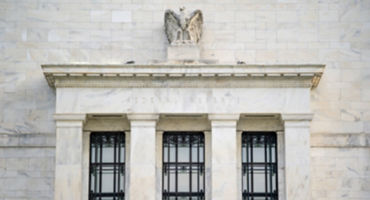- Fixed Income Portfolio Manager
Skip to main content
- Funds
- Insights
- Capabilities
- About Us
- My Account
United States, Institutional
Changechevron_rightThank you for your registration
You will shortly receive an email with your unique link to our preference center.
The views expressed are those of the authors at the time of writing. Other teams may hold different views and make different investment decisions. The value of your investment may become worth more or less than at the time of original investment. While any third-party data used is considered reliable, its accuracy is not guaranteed. For professional, institutional, or accredited investors only.
So far, 2024 has kept fixed income investors busy, with a blockbuster new issuance calendar, a pivot from the Bank of Japan and heightened geopolitical tensions in the Middle East all competing for the market’s attention. Yet inflation — stubbornly lingering above target — has remained the dominant theme, resulting in increased government bond yield volatility as the market has walked back expectations for central bank rate cuts throughout the remainder of the year.
Credit markets, however, paint a different picture. European credit markets have remained notably strong. Spreads have tightened, supported by robust corporate balance sheets, a resilient consumer and favourable market technicals. Yet despite tightening, European investment-grade credit continues to look appealing, providing historically high all-in yields of 3.9%, allowing investors to benefit from attractive income without the need to take excessive risks. What do investors need to know about opportunities in European credit and what could the rest of the year hold?
Understanding the credit cycle — the recurring phases of expansion and contraction in the availability of credit — is a crucial ingredient for successfully managing European investment-grade credit portfolios. Specifically, by anticipating changes in the cycle and dynamically managing overall credit exposure, we aim to participate in the upside while preserving capital on the downside. Put simply, there are times we want to have more exposure to credit, and times we want to have less. Through our active approach to managing credit risk, we seek to insulate clients from the volatility of the credit cycle and aim to provide them with a smooth, consistent return stream of outperformance.
We seek to understand the cycle by paying close attention to the strength of corporate balance sheets, the resilience of the consumer and the speed at which changes in interest rates are transmitting through to the economy. Despite one of the most aggressive rate-hiking cycles in history, European Central Bank (ECB) policy appears to be working, albeit with a longer lag than in previous cycles. Combined with rebounding growth, we believe that credit should remain supported in the near term. We have identified three potential drivers of an extension to the credit cycle:
1. Healthy household balance sheets support consumer spending
Within Europe, household balance sheets remain healthy, with disposable income near 25-year highs (Figure 1). In part, this is because since the global financial crisis (GFC), European consumers have significantly changed their behaviour through saving more and shifting away from riskier forms of borrowing. There have been two further changes: the pandemic saw many consumers build up savings and European homeowners increasingly choose fixed rate over floating mortgages, meaning that today, the average European household is in a much stronger position relative to history, as well as being less sensitive to changes in interest rates.
As inflation comes down from its peak, wage growth and proactive fiscal policy has led to higher real incomes. Consumer balance sheets remain much stronger than historical averages, which should support continued spending — and corporate earnings — in the near term.
2. Changing corporate debt dynamics have pushed refinancing into the future
Debt dynamics haven’t just changed for the European consumer. European corporate borrowers have also become more resilient to rate hikes. Since the GFC, European companies have, for the most part, shifted away from using floating-rate debt as their primary funding mechanism. Instead, they have elected for fixed-rate debt, typically with longer maturities, in an effort to lock in low funding rates post-COVID.
As a result, European companies have been able to push out refinancing, therefore benefiting from lower sensitivity to rate hikes than has historically been the case. This is illustrated in Figure 2, as the average interest cost currently paid by European corporate issuers (current yield) remains lower than the refinancing rate that would be commanded if they were to go to market today (yield to worst).
3. Sticky stock of deposits in European banks have protected consumers and corporates from higher rates
Finally, the large and sticky stock of deposits in banks has, in our view, supported an extension to the European credit cycle.
Unlike in the US, European companies and consumers are generally less sensitive to the interest they earn on their cash accounts and therefore do not typically move from bank deposits to other asset classes in a search for yield. Banks can afford to pay savers lower interest rates than is implied by central bank policy, and in turn can be more lenient with their lending rates, meaning that higher policy rates are not fully passed on to European companies and consumers. This means that private sector borrowers benefit from relatively low borrowing rates to finance growth and spending. We think this is a key factor extending the cycle in Europe.
In our view, all these shifts have dampened the effects of the ECB’s rate hikes, delaying the time taken for higher rates to bite. We believe this has resulted in an extension of the credit cycle and we therefore expect spreads to remain range-bound in the near term, allowing investors to benefit from the attractive income offered by European investment-grade credit. Active managers can enhance returns by anticipating changes in the cycle and dynamically managing overall credit risk.
As we look later into 2024, we remain cognisant that the market is not without risks. In the medium term, we acknowledge that higher rates are likely to lead to tightening credit conditions. Furthermore, there remains the risk of a geopolitical shock, or credit market volatility if a significant rebound in European growth forces the market to re-engage with the possibility of rate hikes. We expect there to be winners and losers as tighter policy feeds through, and we therefore think that investors should augment top-down insights with bottom-up analysis of sectors and individual issuers.
In order to take advantage of the current market environment and any dislocations as they arise, we believe an active, nimble and liquid approach to managing European investment-grade credit offers the greatest chance of success.
BLOOMBERG® and the Bloomberg indices listed herein (the “Indices”) are service marks of Bloomberg Finance L.P. and its affiliates, including Bloomberg Index Services Limited (“BISL”), the administrator of the Indices (collectively, “Bloomberg”) and have been licensed for use for certain purposes by the distributor hereof (the “Licensee”). Bloomberg is not affiliated with the Licensee, and Bloomberg does not approve, endorse, review, or recommend financial products if named herein (the “Products”). Bloomberg does not guarantee the timeliness, accuracy, or completeness of any data or information relating to the Products.
Experts


Flexibility with focus: how to position fixed income for volatility
Continue readingThe yield buyer
Continue readingHigh hopes and low credit spreads
Continue readingTime for credit selection to shine
Continue readingTop 5 fixed income ideas for 2025
Continue readingSecuritized credit: Opportunity amid tight corporate spreads?
Continue readingGoing their separate ways: Capitalizing on bond divergence
Continue readingMultiple authors
URL References
Related Insights
Stay up to date with the latest market insights and our point of view.
Thank you for your registration
You will shortly receive an email with your unique link to our preference center

Flexibility with focus: how to position fixed income for volatility
Portfolio Manager Martin Harvey and Investment Director Marco Giordano explore how a focused use of flexibility can help position fixed income portfolios for volatility.

The yield buyer
Our fixed income experts examine the impact of tight credit spreads and elevated yields on today’s credit markets and explore the value of active management.

High hopes and low credit spreads
Connor Fitzgerald highlights the implications of tight credit spreads and the importance of flexibility for fixed income managers navigating today's market.

Time for credit selection to shine
Fixed income investors continue to seek answers to an era of volatile rates. Large, static exposures to credit markets no longer cut it. Instead, a nimble and dynamic approach is more likely to create resilient and consistent total return outcomes.

Top 5 fixed income ideas for 2025
Fixed Income Strategist Amar Reganti and Investment Communications Manager Adam Norman outline which five areas of fixed income may be best positioned in 2025.

Securitized credit: Opportunity amid tight corporate spreads?
Portfolio Managers Rob Burn and Cory Perry discuss why they believe securitized credit has an attractive role to play in today’s tight-spread environment and highlight potential areas of opportunity in 2025.

Going their separate ways: Capitalizing on bond divergence
Our fixed income experts discuss how to position portfolios for a world of uncertainty and divergence, exploring key themes and evolving bond opportunities for 2025.
Multiple authors

The credit cycle has been extended — but what’s next?
Credit experts Derek Hynes, Joe Ramos and Will Prentis discuss why they believe the current credit cycle still has legs and explore likely implications for credit portfolios in 2025.
Multiple authors

What's current in credit: November 2024
Connor Fitzgerald explores the impact of President Trump’s US election victory on credit markets. Where are the opportunities and risks for credit investors now?

Time for bond investors to take the wheel?
Volatility makes bond investing less straightforward, but it can also create opportunities, provided investors are in a position to "take the wheel" in order to capitalise on them.

Are bond investors ready for a US industrial revolution?
Portfolio Manager Connor Fitzgerald discusses why bond investors should ready themselves for a potential US industrial revolution and shares his perspective on how to reposition portfolios for such a scenario.
URL References
Related Insights
© Copyright 2025 Wellington Management Company LLP. All rights reserved. WELLINGTON MANAGEMENT ® is a registered service mark of Wellington Group Holdings LLP. For institutional or professional investors only.
Enjoying this content?
Get similar insights delivered straight to your inbox. Simply choose what you’re interested in and we’ll bring you our best research and market perspectives.
Thank you for joining our email preference center.
You’ll soon receive an email with a link to access and update your preferences.